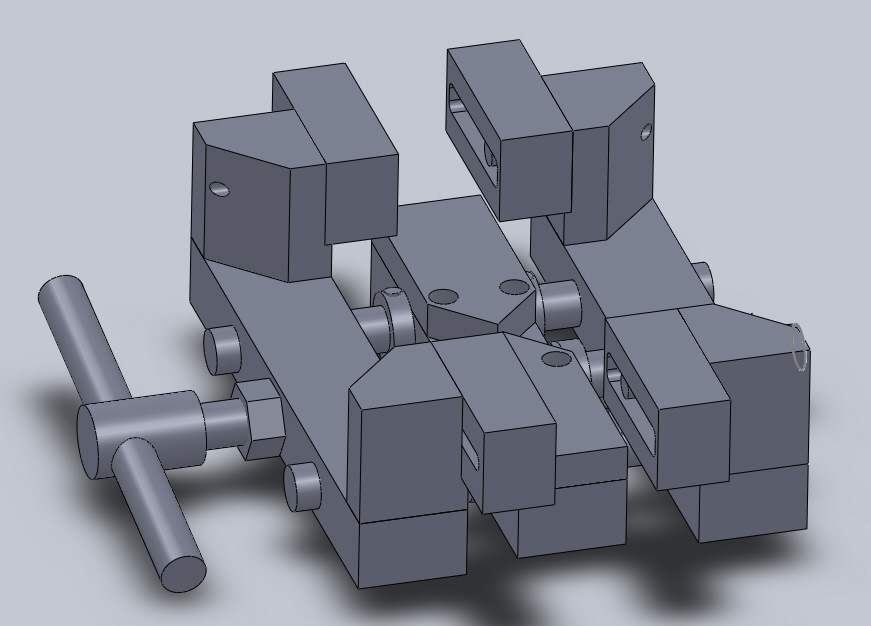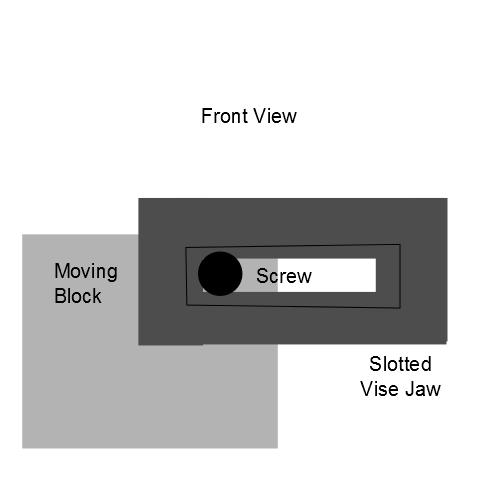Cold Saw/V1 Design Rationale/Hold System: Difference between revisions
No edit summary |
No edit summary |
||
| Line 2: | Line 2: | ||
*The hold system should be rigid relative to the mounting surface of the Cold Saw such that modularity exists for automatic linear feed from the side. If the hold system was loose or meant to turn, the linear feed system would have to rotate precisely as well- given the high weight and low mechanical advantage associated with such an operation, a moving hold system is suboptimal relative to a moving blade rotation system. | *The hold system should be rigid relative to the mounting surface of the Cold Saw such that modularity exists for automatic linear feed from the side. If the hold system was loose or meant to turn, the linear feed system would have to rotate precisely as well- given the high weight and low mechanical advantage associated with such an operation, a moving hold system is suboptimal relative to a moving blade rotation system. | ||
*If a part of the Cold Saw has high rigidity with contact on the mounting surface, then superior mounting rigidity is achieved. In addition, the swivel system will require a surface to slide on and a surface to clamp onto, hence a rigid base (a plate would be effective) is ideal for the Cold Saw as opposed to mounting the hold system directly to the Cold Saw's mounting surface. | |||
*The remaining aspect of the hold system, the mechanism to clamp the workpiece, can be called the vise. | |||
=Concepts= | |||
[http://opensourceecology.org/wiki/Cold_Saw/V1_Design_Rationale/Hold_System/Vise Vise] | |||
[http://opensourceecology.org/wiki/Cold_Saw/V1_Design_Rationale/Hold_System/Base Base] | |||
=Auto-Centering Vise= | =Auto-Centering Vise= | ||
Revision as of 19:37, 11 June 2012
Hold System Notes
- The hold system should be rigid relative to the mounting surface of the Cold Saw such that modularity exists for automatic linear feed from the side. If the hold system was loose or meant to turn, the linear feed system would have to rotate precisely as well- given the high weight and low mechanical advantage associated with such an operation, a moving hold system is suboptimal relative to a moving blade rotation system.
- If a part of the Cold Saw has high rigidity with contact on the mounting surface, then superior mounting rigidity is achieved. In addition, the swivel system will require a surface to slide on and a surface to clamp onto, hence a rigid base (a plate would be effective) is ideal for the Cold Saw as opposed to mounting the hold system directly to the Cold Saw's mounting surface.
- The remaining aspect of the hold system, the mechanism to clamp the workpiece, can be called the vise.
Concepts
Auto-Centering Vise
Improves cut quality and fits more workpiece sizes and shapes
Auto-centering occurs because the 2 moving blocks move towards and away from the center when the handle is rotated one way or the other. The handle is welded at its center to a threaded rod; when the threaded rod rotates, the left-handed nut and right-handed nut move relative to the threaded rod. The threaded rod is held in place relative to the fixed block by shaft collars. Because the threaded rod does not move relative to the fixed block, the nuts must move relative to the fixed block. The nuts are welded to the outside faces of the moving blocks such that when the threaded rod rotates, the nuts, and hence the moving blocks, move relative to the fixed block.
The shaft collars prevent the shafts and threaded rod from moving under friction and handle rotation, respectively.
The thrust washers minimize friction caused by the rotation of the threaded rod's shaft collars under clamping tension.
Cut Location Notes: If the cut occurs at the center of the clamping volume, we achieve maximum clamping rigidity and optimal vise dimensions to facilitate angled cuts (because the vise needs a wide mouth for angled cuts, better to go wide from the center than anywhere else for maximum rigidity and dimensional uniformity).
Cut Depth Notes: At all possible cut angles, the blade must not contact the vise.
Vise Dimensional Notes: The vise achieves maximum rigidity and minimum material usage when its clamping volume is as close to its mounting surface as possible.
Feature: Adjustable and Removable Vise Jaws
- Adjustable and Removable Vise Jaws (to accommodate variety of workpiece shapes and dimensions)

